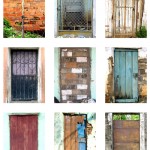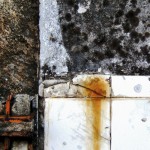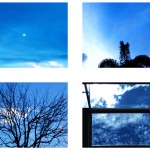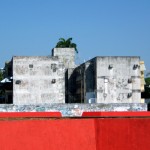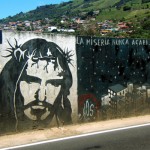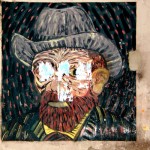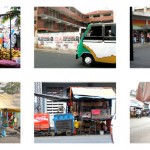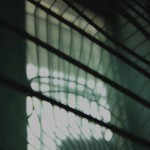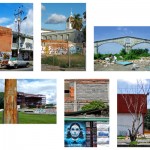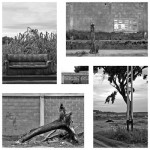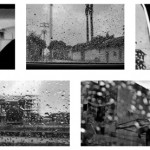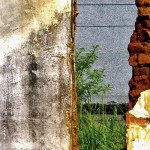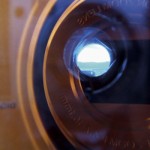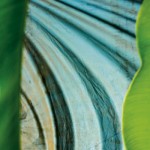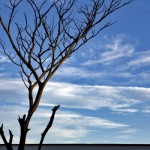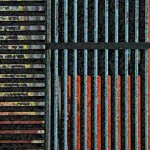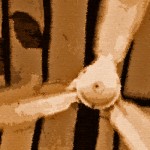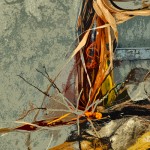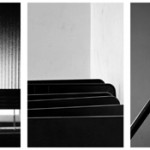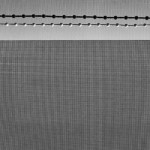Project Description
Biography
Juan Mogollon Solorzano was born on June 10th, 1976 in Araure in Portuguesa, Venezuela. He started his studies in graphic design in his hometown in the Colegio Universitario Monseñor de Talavera.
Since that time of university studies and through the stimulus of the architect and artist Jose Laurencio Perez Yllaramendi, one of his professors, Mogollon decides to go farther than what the academic curriculum, farther than the simple and mere profile description of a graphic designer, to complete his future in an art profession. That is how so many concerns start to arouse in this young student, the wanting to know more than what his classes were already teaching him, which meant that graduating was just not enough for him.
Through life’s destiny, he meets one of the most known photographers in Portuguesa, Hernan ‘Chino’ Rivero, through who he meets Benjamin Arenas, a very important visual artists from the region, and since then starts a bond of friendship and brotherhood with visual artists, that take him to not only to go to exhibits but in a short time they start exhibiting together, being selected to represent Portuguesa with other 9 artists in the 1st Greater competition of Arts and Letters Chapter Visual Arts at the Museum of Contemporary Art in Caracas, which was his first exhibit.
Tired of satisfying everyone’s necessities and of being willing by interpreting others’ ideas, he then decides that from then on he will start using the camera as a tool and photography as a medium of expression. And with time, he keeps getting selected in Salons and Biennials both in visual art and photography. One of the most important ones is the 4th National Biennial of Venezuelan Photography Daniela Chappard, the 7th Photography Salon of Seguros Catatumbo, the editions VI, X and XI of the Dycvensa Salon of Visual Arts and the 9th National Biennial of Photography where he was awarded the Price ‘Mario Pelusso Gallery’. He was recently accepted in the 67 Biennial Salon Arturo Michelena, which opened in November of 2014 and in February of 2015 his photography, transcended the national borders first time to Spain, in the exhibit of Venezuelan photographers in the Center of Business Gallery CN Lagasca in Madrid
Artist Statement
My aesthetic influences come from the graphic of design and the visual of the painting; I am a visual artist that uses the camera as a tool and photography as a technique and medium of expression.
Lines and Texture Series
Influenced directly by two basic elements and elementary in the design language and the visual communication, Lines and Texture, this photographic series has the intention of taking details present in nature and objects created by men, the ones that always go unnoticed by the environment where they are.
These images were designed to be in close communion with the plastic aesthetics of painting, being able to be perceived by the spectator’s freewill, either as a picture close to a painting or as a digital painting created by the lens and manipulation of the camera.
The common denominator of this series is the close plans or macro. Its that way how the convincing expression of these works are developed, which, I honestly confess, are not my own, but are intellectual, and are present everywhere, as I said before, in nature or produced by men, accessible to everyone that has the minimal sensibility, perception, composition and creativity.
This visual code is more esthetic than conceptual, but not because of that it is ephemeral and with missing content. These are pieces that have the power of activating or not, the capacity of interpretation of whom is contemplating, like many times happens before a work with these characteristics – more abstract than figurative– one tries to resolve – erroneously – as if it was a crossword puzzle. If the picture is of a tree’s root, or of a wall worn by time, but where is this tree? Where is that wall? These are questions that shouldn’t be repeated, while one is trying to educate visually everything that needs it. The important part is not what it seems by simple intuition but what it transmits and makes you feel by perception.
Urban Scenery Series
This photographic essay is developed in two slopes. The first is in charge of translating and reinterpreting the classical elements of traditional scenery; transforming that way the path of earth in avenues and streets of asphalt, the trees in public lighting, and the hills or extensive plains in buildings. With the intention that through closed plans, details that are present in any of our cities can be captured, having as principal ingredient architecture, with its visual aesthetic linked to contrasts, within the planned and the absence of itself, added too to the vestige of the past that has been forgotten.
The second slope is a graphical chronicle of…
…everything that is there and we do not see,
hear but not really hear
inert-present,
daily and insane.
Images very common in what is convulsed and ironically called civilization. Pollution of all kinds, visual, hearing, environmental; informal economy, alienated consumerism, public transportation that have been transformed in capsules of a parallel-bizarre dimension. Consequence of how much it is done to correct it and how little matters to whom allow it to keep being advertised.
Tube test series
Just like the Urban Scenery series, this series is developed in two slopes. Registering the first in the digital intervention of the images, transforming them beyond the anecdotal and illustrative, in an aesthetical approach of the graphic arts and painting.
The second is destined as the representation of concepts and internal reflections, using the extensive and suggestive power of the image, materializing then, the visual code that every artists seeks for its work: expression, perception, analysis and interpretation.
Biografia
Juan Mogollón Solórzano nace en Araure, cono norte del estado Portuguesa el 10 de Junio de 1976. Inicia estudios de Diseño Gráfico en su ciudad natal en el Colegio Universitario Monseñor de Talavera, del cual egresa en su primera promoción en Octubre de 1998.
Desde esa época de formación universitaria y mediante estimulo del Arquitecto y Artista Plástico José Laurencio Pérez Yllaramendi -uno de sus Profesores- Mogollón toma como norte ir mas allá de lo que decía el pensum académico, mas allá de la simple y mera descripción del perfil del diseñador gráfico, para complementar su futura profesión con el Arte. Es así como se despiertan en este joven estudiante muchas inquietudes, el querer saber mas de lo que las materias ya le decían, por lo que llegar a graduarse no fue suficiente para el.
Por aciertos del destino conoce a uno de los fotógrafos referentes en Portuguesa, el desaparecido físicamente Hernán ‘Chino’ Rivero, mediante el cual conoce a Benjamín Arenas, uno de los Artistas Plásticos mas importantes de esta entidad llanera, y a partir de allí comienza un vinculo de amistad y hermandad con mas artistas plásticos, que lo llevan a no solo acompañarlos a ver exposiciones, sino a también en corto tiempo a exponer junto a ellos, siendo seleccionado para representar al estado Portuguesa junto a otros 9 artistas en el 1er. Certamen Mayor de las Artes y de las Letras Capitulo Artes Visuales en el Museo de Arte Contemporáneo de Caracas, esa fue su primera exposición. Cansado ya de satisfacer las necesidades de los demás y de ser complaciente al interpretar ideas ajenas, decide entonces de allí en adelante asumir a la cámara como una herramienta y a la fotografía como un medio de expresión. Y con el paso del tiempo seguir quedando seleccionado en Salones y Bienales tanto de Artes Visuales como de Fotografía también. Entre las mas importantes están la 4ta. Bienal Nacional de Fotografía Venezolana Daniela Chappard, el 7mo. Salón de Fotografía de Seguros Catatumbo, las ediciones VI, X y XI del Salón de Artes Visuales Dycvensa, la 9na. Bienal Nacional de Fotografía en donde le fue otorgado el Premio ‘Galeria Mario Pelusso’. Recientemente aceptado en la 67 Bienal Salón Arturo Michelena inaugurado en Noviembre del año 2014 y en Febrero de éste 2015 por primera vez sus fotografías transcienden las fronteras de su país natal hasta España, en una Exposición de Fotógrafos Venezolanos en la Galería del Centro de Negocios CN Lagasca en Madrid.
Declaracion de Artista
Mis influencias estéticas provienen de lo gráfico del diseño y la plástica de la pintura, soy un artista visual que utiliza la cámara como una herramienta y a la fotografía como una técnica y medio de expresión.
Serie Líneas y texturas
Influenciada directamente por dos elementos básicos y elementales del lenguaje del diseño y la comunicación visual –línea y textura– , esta serie fotográfica tiene la intención de tomar detalles presentes en la naturaleza y objetos creados por el hombre, los mismos que siempre pasan desapercibidos por el sitio o ambiente donde se encuentran.
Estas imágenes fueron concebidas para estar en íntima comunión con la estética plástica de la pintura, pudiendo ser percibidas al libre albedrío del espectador, bien sea como una fotografía cercana a la pintura, o como una pintura digital creada por el lente y manipulación de una cámara.
El denominador común de esta serie son los planos cerrados o macro. Es así como se desarrolla la expresión contundente de estas obras, las cuales –confieso honestamente– no son de mi autoría material, pero si intelectual, están presentes en cualquier parte –como dije anteriormente, en la naturaleza o producidas por el hombre-, son accesibles a todo aquel que tenga un mínimo de sensibilidad, percepción, composición y creatividad.
Este código visual es más estético que conceptual, no por esto es efímero y con falta de contenido. Son piezas que tienen el poder de activar o no, la capacidad de interpretación del que la esté contemplando, como muchas veces pasa ante una obra de estas características
–mas abstracta que figurativa-, se intenta resolver –erróneamente– como si tratará de un crucigrama. Si es la foto de una corteza de árbol, de una pared desgastada por el tiempo, pero ¿Donde está ese árbol?, ¿Donde está esa pared?. Preguntas que no se deben repetir, mientras se intente educar visualmente a todo aquel que lo necesite.
Lo importante no es lo que parezca por simple intuición, sino lo que transmita y haga sentir por percepción.
Serie Paisaje urbano
Este ensayo fotográfico está desarrollado en dos vertientes. La primera se encarga de traducir y reinterpretar los elementos clásicos del paisaje tradicional; transformando así el camino de tierra en avenidas y calles de asfalto, los árboles en alumbrado público, y los cerros o extensas llanuras en edificios. Osada intención que mediante planos cerrados, captura detalles que están presentes en cualquiera de nuestras ciudades, teniendo como principal ingrediente compositivo-expresivo, a la Arquitectura, su estética visual vinculada a contrastes, entre lo planificado y la ausencia del mismo, sumado también a los vestigios del pasado que han caído en el olvido.
La segunda vertiente es una crónica gráfica de…
…todo aquello que está allí y no lo vemos,
oímos, no lo escuchamos,
inerte-presente,
cotidiano y demente.
Imágenes muy comunes en la convulsionada e irónicamente llamada civilización. Contaminación de todo tipo, visual, sonora, ambiental; economía informal, consumismo alienado, transporte público (buses, busetas y/o camioneticas) que se han transformado en capsulas de una dimensión paralela-bizarra. Consecuencia de lo mucho que no se hace para corregirlo y de lo poco que le importa a los que dejan que se siga propagando.
Serie Tubos de ensayo
Al igual que la serie Paisaje urbano, Tubos de ensayo está desarrollada en dos vertientes. Inscribiéndose la primera en la intervención digital de las imágenes, transformándolas mas allá de lo anecdótico e ilustrativo, en un acercamiento estético a las Artes Gráficas y la Pintura.
La segunda esta destinada a la representación de conceptos y reflexiones internas, utilizando el poder expresivo y sugestivo de la imagen, materializando así, el código visual que todo Artista persigue para su obra: expresión, percepción, análisis e interpretación.
Curriculum: CurriculumVitae JuanMogollónSolórzano
Ficha Técnica: Juan Mogollon_FICHA TECNICA
Contact
- ‘Entradas eternas, salidas internas’
- S/T – De la Serie ‘Líneas y Texturas’
- ‘Soledad-Indecisión / Angustia-Encierro’ – De la Serie ‘Tubos de Ensayo’
- ‘Contraste IV’ – De la Serie ‘Paisaje Urbano’
- ‘…la fe tampoco’ – De la Serie ‘Encuentros Efímeros’
- ‘Impresionismo POP’ – De la Serie ‘Encuentros Efímeros’
- ‘CON SU MISMO problema’ – De la Serie ‘Paisaje Urbano’
- ‘Interna mi atmósfera’ – De la Serie ‘Tubos de Ensayo’
- ‘Cicatrices’ – De la Serie ‘Paisaje Urbano’
- ‘Lluvia transitada’ – De la Serie ‘Paisaje Urbano’
- ‘Génesis’ – De la Serie ‘Líneas y Texturas’
- ‘ARTEfacto, efecto-afecto’ – De la Serie ‘Tubos de Ensayo’
- S/T – De la Serie ‘Líneas y Texturas’
- S/T – De la Serie ‘Líneas y Texturas’
- ‘Gráfica II’ – De la Serie ‘Tubos de Ensayo’
- ‘Monocromía IV’ – De la Serie ‘Tubos de Ensayo’
- S/T – De la Serie ‘Tubos de Ensayo’
- ‘Abstraccionismo Geométrico Minimalista’ – De la Serie ‘Líneas y Texturas’
- ‘Abstraccionismo Geométrico’ – De la Serie ‘Líneas y Texturas’

